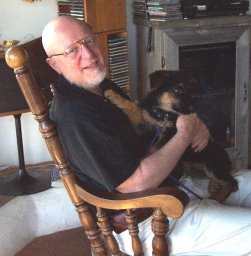WIGGLE Charts—A Sketching Tool for Designers
There's no sense being precise about something when you don't even know what you're talking about. - John von Neumann
For systems designers, it is the best of times and the worst of times. For years we muddled through with a few simple graphic tools for design and documentation—flowcharts, block diagrams, and perhaps decision tables. Then came the diagram explosion, with HIPO, HIPO/DB, Warnier-Orr diagrams, Softech's SADT, Nassi-Shneiderman charts, Petri nets, Constantine structure charts and data flow diagrams, Jackson data structure diagrams, and coding schemes. And for each of these diagrams, you need only bend a line or add a symbol to become known as the inventor of yet another graphic design tool.
Although the choice is large, it is really not very wide. Each of these diagrammatic schemes shares the characteristic of precision—wonderful when you know what you're talking about, but time-consuming and thought-stifling when you don't. And, since most design work is spent thinking roughly, few of these diagrams are of much help through large parts of the design process.
In other design fields, such as architecture, the rough sketch is the most frequently used graphic device, and precise detailed drawings are rarely used at all until the creative part of the design work is finished. The rough sketch has several advantages over the precise drawing:
1. It can be drawn much faster, thus using less time.
2. It represents less investment of time, so we're not afraid to throw it away and try something else.
3. It's very roughness conveys important information about where we are in the design process.
In information processing, rough sketches have always existed, but have never been glorified by a name or by favorable publicity. Schools of architecture offer courses in sketching. The student architect who makes clear quick sketches is much admired by faculty and peers alike. It's time we learned from more mature disciplines and put sketching up on a pedestal.
For many years, I've taught a method of sketching usable with most of the diagrammatic techniques now used in information processing. Although it's been received with enthusiasm, it's never received much publicity, perhaps because:
1. It doesn't require a template.
2. It doesn't have a name.
Although I'll continue to resist the template forces, I've decided to bring the baby to life with a catchy acronym, WIGGLE Charts, for Weinberg's Ideogram for Generating Graphics Lacking Exactitude.
A WIGGLE is merely a box, or block, or line, with one or more rough edges. The rough edges indicate what parts represented by the box or line are imprecisely known. For instance, the following figure is a sketch of a system using a block diagram form
A WIGGLE block diagram
Each box represents input coming from the left, processing inside, and output going to the right. Box 1 has a straight line at its left side, indicating the input to Box 1 is clearly defined somewhere. The right side, however, is rough, indicating we haven't decided what its output will be. As indicated in the diagram, some output will be passed to a second box. but we don't know exactly what. The top and bottom of Box 1 are rough lines, indicating we don't know exactly what this process will be.
Box 2 has undefined input and output, but its process is well known to us, and clearly delimited in scope. Perhaps we have decided to use an off-the-shelf sort, though we don't know which one, so we haven't decided upon a record format.
Box 3 takes the unknown output of Box 2 as its unknown input. By a process that's not yet well defined, it produces two outputs, one well defined and one known only roughly. Perhaps the first report is defined by legal requirements, or by input needs of another system, while the second output is an error report whose format is left open at this stage of the design process. The rough arrows between the boxes indicate we haven't yet decided how control will pass from one box to another. They could be subroutines of the same master routine, or steps in the same job, or separate steps manually coordinated.
Taken together, these three WIGGLE boxes and their arrows give a sketch of the overall design we have in mind. Perhaps more important is what they don't do:
1. They don't give us or any reader an unjustified feeling of precision.
2. They don't intimidate anyone who has an idea about changing something to improve the design.
3. They haven't wasted a lot of time drawing with templates.
Perhaps the nicest feature of WIGGLE charts is the way they can be used with just about anybody's diagrammatic technique. In the second half of this blog post, we'll look at a few more examples of how WIGGLE charts can be used.
(to be continued)
Source










